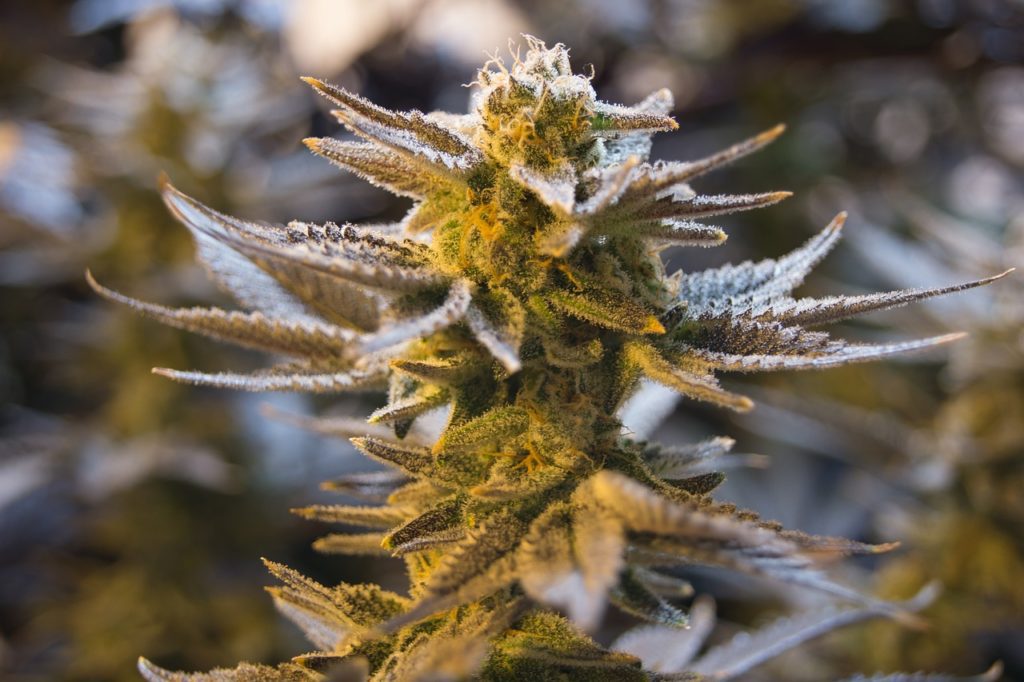Proper lighting lies at the heart of successful indoor gardening, and mastering the concepts of light spread and coverage area is essential for creating an environment where your plants can truly flourish. In this article, we will delve deep into these crucial aspects, unraveling their significance and exploring how they can help you optimize plant growth and yield in your indoor garden.
Optimal light heights for cannabis
The optimal light heights for cannabis cultivation depend on various factors, including the stage of growth, the type of light being used, and the specific strain being cultivated. The goal is to provide the right amount of light intensity to promote healthy plant growth, maximize yields, and avoid issues like light burn or stunted growth.
Here are some general guidelines for light heights during different growth stages:
- Germination and Seedling Stage: During this stage, seedlings need lower light intensity to prevent burning. A light height of around 24 to 36 inches (60 to 90 cm) above the plants is recommended.
- Vegetative Stage: As the plants grow, you can gradually lower the light to around 18 to 24 inches (45 to 60 cm) above the canopy. This promotes bushier growth and stronger stems.
- Flowering Stage: During flowering, cannabis plants require more intense light to support bud development. Keep the lights around 12 to 18 inches (30 to 45 cm) above the canopy. Some strains might tolerate lights slightly closer or farther depending on their genetics.
- Late Flowering and Ripening Stage: In the final weeks of flowering, you may need to adjust the light height slightly depending on the strain and the condition of the plants. Generally, you can maintain the lights around 12 to 18 inches (30 to 45 cm) above the canopy.
It’s important to note that these are just general guidelines. Different types of lights (such as LED, HPS, MH, etc.) have different light intensity profiles and heat outputs, which can influence the optimal height. Additionally, environmental conditions like temperature and humidity also play a role in determining the ideal light height.
To calculate the optimal light height, you can follow these steps:
- Manufacturer Recommendations: Refer to the manufacturer’s guidelines for your specific grow light. They often provide recommendations for the ideal hanging height for different growth stages.
- Light Intensity Measurement: Use a light meter (par meter) to measure the light intensity at the canopy level. This will help you ensure that your plants are receiving the desired light levels.
- Observe Plant Response: Monitor your plants closely. If you notice signs of stress (such as leaf curling, bleaching, or discoloration), it could indicate that the lights are too close and need to be raised. If the plants are stretching excessively, the lights might be too far away and should be lowered.
- Strain-Specific Adjustments: Different cannabis strains have varying light requirements. Some strains might thrive with lights a bit closer, while others might need more distance. Keep an eye on how your specific plants are responding.
Remember that fine-tuning the light height might require some experimentation and adjustments based on your observations. It’s also crucial to maintain a balanced environment with appropriate ventilation, temperature, and humidity levels to ensure optimal plant health and growth.

Defining Light Spread and Its Importance
Picture a sunbeam filtering through the leaves of a dense forest. The light doesn’t just illuminate a small portion of the forest floor; it spreads and diffuses, touching every plant and surface in its path. This phenomenon, known as light spread, is equally critical within the confines of your indoor garden.
Light spread refers to how evenly light is distributed across a given space. It directly influences the uniformity of light coverage your plants receive. Ensuring uniform light spread has a direct impact on the health and development of your plants. Uneven lighting can lead to variations in growth rates, with some plants receiving too much light while others remain in the shadows.
The Role of Reflective Surfaces in Enhancing Light Spread
To maximize light spread, consider the role of reflective surfaces. Reflective materials such as mirrors, Mylar, and reflective films can effectively bounce and scatter light, redirecting it toward areas that might otherwise be shaded. By strategically placing these materials around your indoor garden, you can significantly enhance light distribution, ensuring that every plant receives its fair share of the light.
Defining Coverage Area and Its Significance
Imagine you’re casting a spotlight on a stage. The coverage area is the space that the spotlight effectively illuminates. Similarly, LED grow lights come with specified coverage areas, indicating the space over which they can provide adequate light to support plant growth. This metric is critical because it determines how many plants can benefit from the light emitted by a single fixture.
Selecting LED grow lights with an appropriate coverage area is essential to avoid uneven growth and ensure every plant receives the necessary light. Inadequate coverage can lead to plants at the edges of the coverage area receiving insufficient light, leading to stunted growth and diminished yields.
Matching LED Grow Lights to Your Indoor Garden Size
The dimensions of your indoor garden play a pivotal role in determining the type of LED grow lights you need. Different types of LED grow lights offer varying coverage areas and light distribution patterns, allowing you to tailor your choice to your specific garden size and layout.
For smaller spaces, compact panel lights or spotlight LED grow lights might be suitable. Larger spaces may benefit from panel lights, which provide broader coverage. It’s crucial to carefully evaluate your garden’s dimensions and layout to select LED grow lights that can effectively cover the entire canopy.
Maximizing Light Distribution: Reflective Surfaces, Light Movers, and Adjustable Hangers
Enhancing light distribution involves a combination of smart strategies. Reflective surfaces, such as mirrors or reflective films, can be strategically placed to bounce light onto shaded areas, reducing the chances of uneven growth.
Another innovative approach is the use of light movers, which gently oscillate or move the light fixtures, ensuring that each plant receives a more even distribution of light over time. This dynamic movement minimizes the risk of stagnant shaded spots in your garden.
Adjustable light hangers provide flexibility in adjusting the height and angle of your LED grow lights as your plants grow. This adaptability allows you to maintain optimal light penetration through the canopy, avoiding overexposure and light wastage.
The Influence of Light Height on Coverage Area
The height at which you place your LED grow lights significantly impacts coverage area and light intensity. Lowering the lights closer to the canopy increases light intensity but narrows the coverage area. Raising the lights widens the coverage area but reduces light intensity. Striking the right balance between height and coverage ensures that each plant receives sufficient light without causing light stress.
Regular Assessments and Adaptations for Optimal Results
As your plants grow, their light requirements change. Regularly assessing your garden’s light spread and coverage area and making necessary adjustments will help you maintain optimal conditions. Plants at different stages of growth may require varied light distribution patterns.
Be prepared to adapt your setup as your plants thrive. Adjusting the height, angle, or spacing of your LED grow lights can prevent issues like overcrowding and ensure that all plants continue to receive the light they need.
Conclusion: Enlightening Your Indoor Garden
Understanding light spread and coverage area is pivotal in unlocking the full potential of your indoor garden. By selecting the right LED grow lights, leveraging reflective surfaces, and using innovative solutions like light movers and adjustable hangers, you can create an environment where every plant basks in the glow of optimal light.
Achieving uniform light coverage throughout your indoor garden enhances plant health, growth, and ultimately, the yield of your harvest. Mastering the art of light spread and coverage area allows you to cultivate a thriving oasis within the confines of your home, providing your plants with the perfect conditions to flourish and ensuring your indoor gardening journey is as enlightening as it is rewarding.
